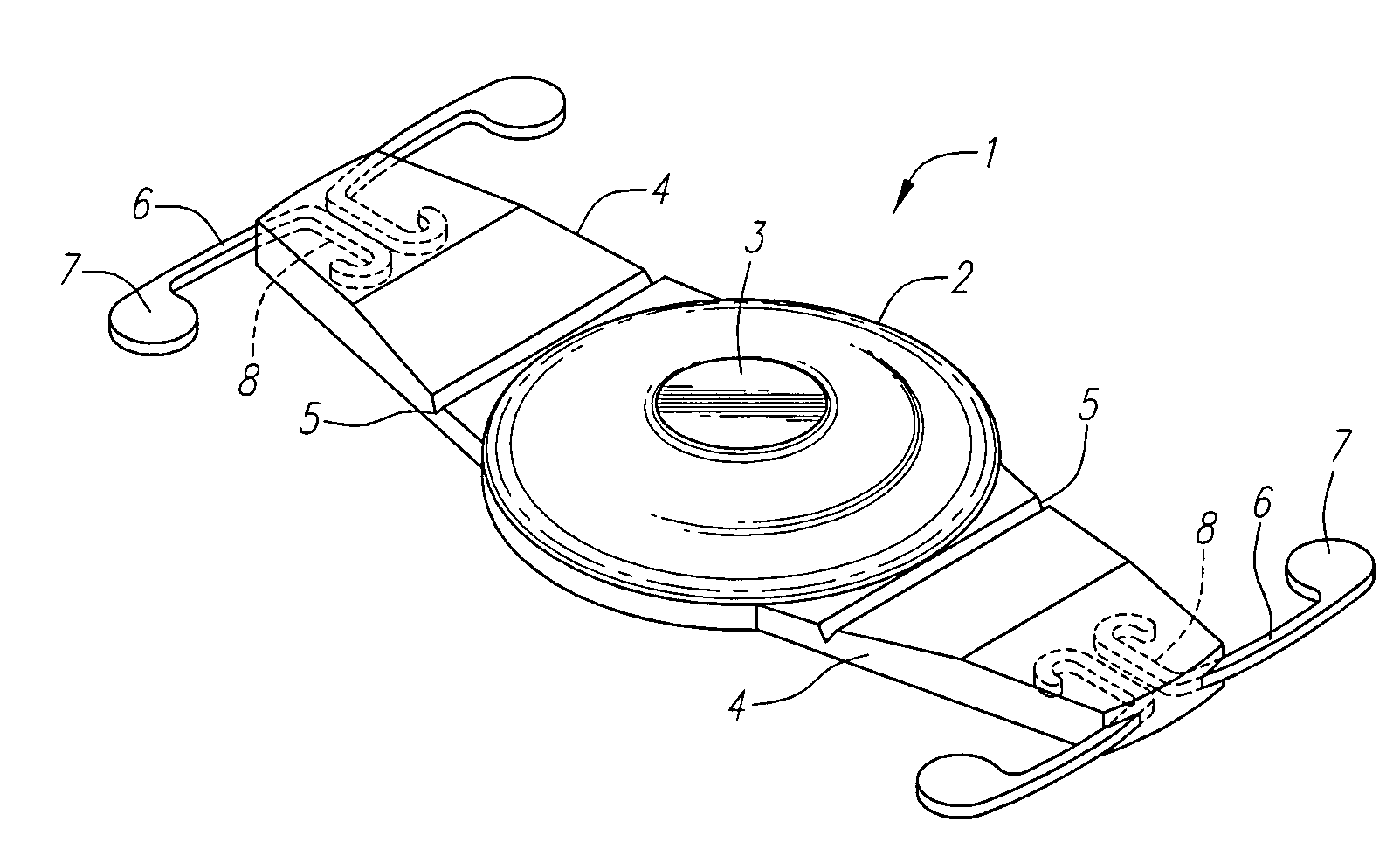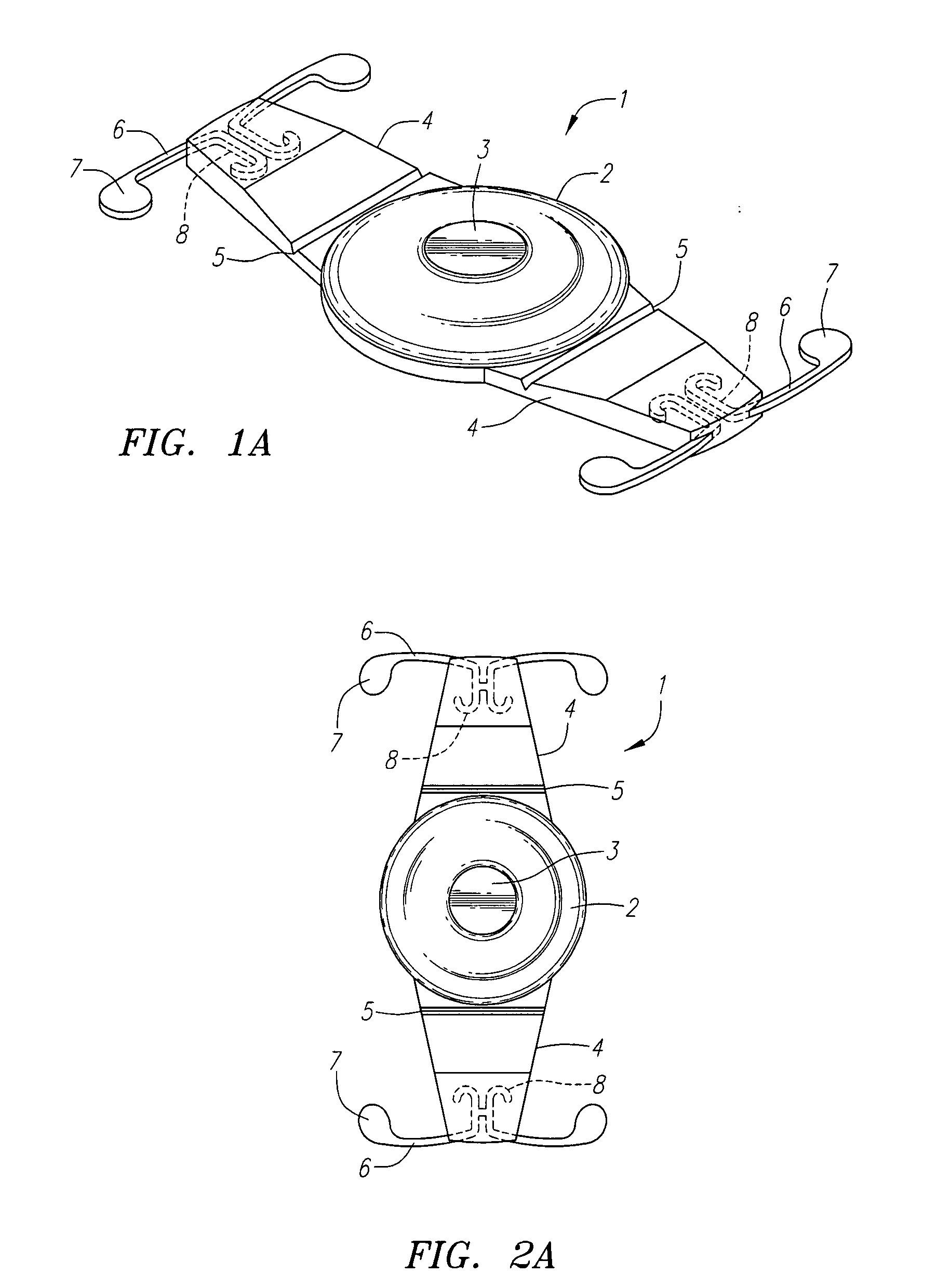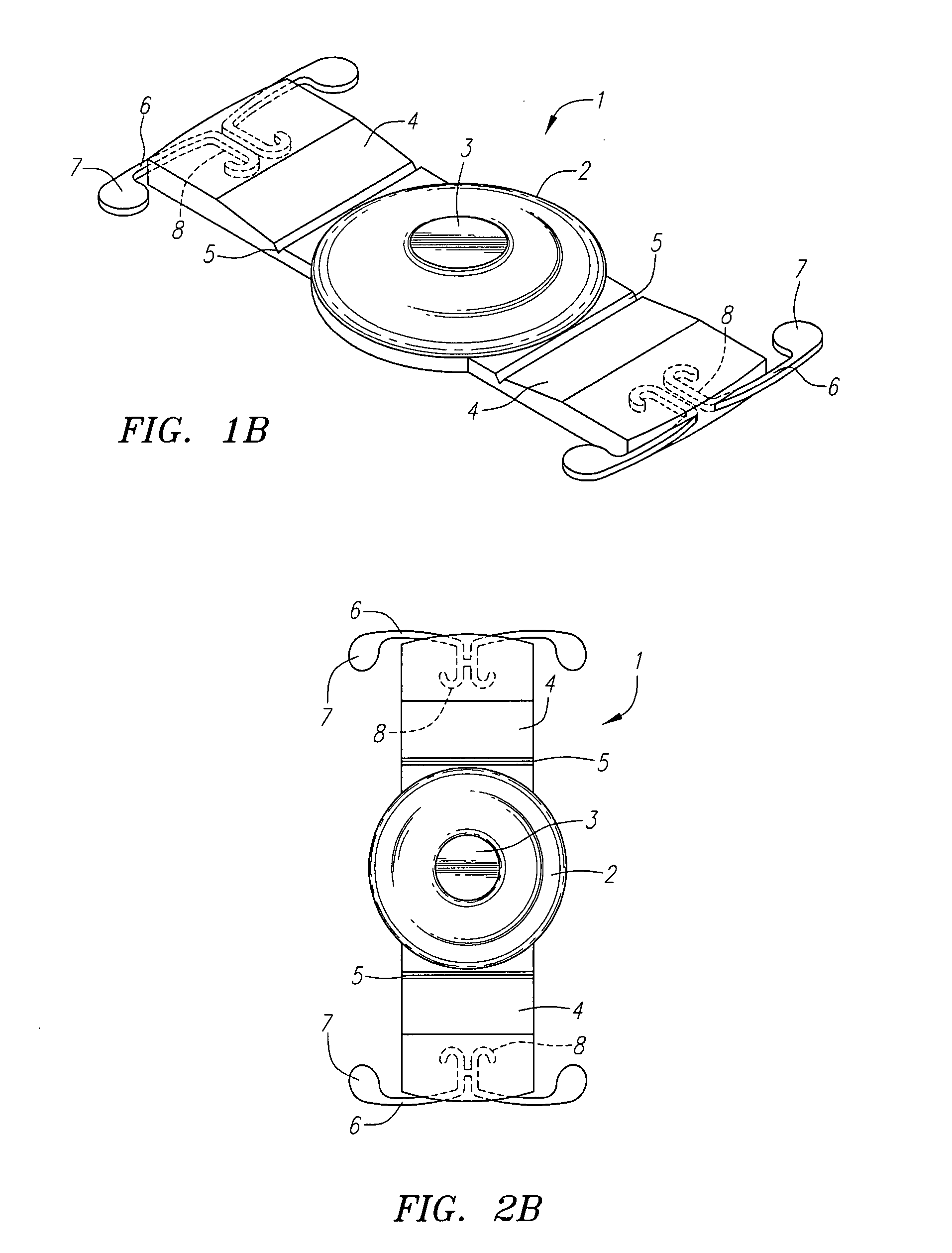Intraocular lens
a technology of intraocular lens and lens cap, which is applied in the field of intraocular lens, can solve the problems of limited materials from which the lens is made, affecting the near vision of patients, and reducing the use of intraocular lens, so as to improve the patient's near vision, increase the depth of focus, and increase the power
- Summary
- Abstract
- Description
- Claims
- Application Information
AI Technical Summary
Benefits of technology
Problems solved by technology
Method used
Image
Examples
Embodiment Construction
[0020]Turning now to the Figures, preferred embodiments are illustrated in detail comprising an intraocular lens 1 formed as a flexible solid optic 2 and can be made of silicone, and flexible extending portions 4 of any suitable form which may be plate haptics, open or closed loops, or fingers which are capable of multiple flexations without damage and formed, for example, of silicone, acrylic or collamer. The optic 2 and haptics 4 preferably are uniplanar, and one or more haptics 4 extend distally from sides of the optic 2. The ends of the plate haptics may have fixation and / or centration extensions which can be flexible loops or protuberances on one or both sides and / or on the edges of the plates. The plate haptics may have a square edged ridge across the posterior surface width of the plate to reduce posterior capsule opacification. The haptics can be tapered as seen in FIGS. 1a and 2a, or with parallel sides as in FIGS. 1b and 2b.
[0021]According to the present invention, the op...
PUM
| Property | Measurement | Unit |
|---|---|---|
| length | aaaaa | aaaaa |
| length | aaaaa | aaaaa |
| diameter | aaaaa | aaaaa |
Abstract
Description
Claims
Application Information
 Login to View More
Login to View More - R&D
- Intellectual Property
- Life Sciences
- Materials
- Tech Scout
- Unparalleled Data Quality
- Higher Quality Content
- 60% Fewer Hallucinations
Browse by: Latest US Patents, China's latest patents, Technical Efficacy Thesaurus, Application Domain, Technology Topic, Popular Technical Reports.
© 2025 PatSnap. All rights reserved.Legal|Privacy policy|Modern Slavery Act Transparency Statement|Sitemap|About US| Contact US: help@patsnap.com



